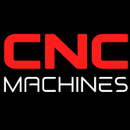American Dark Dog Factories: Fully Automated Manufacturing in 2040 and Beyond

The Future of American Dark Dog Factories: Fully Automated Manufacturing in 2040 and Beyond
In a world of rising labor costs, shrinking lead times, and increasing demand for customization, the dark factory—a fully automated, lights-out manufacturing facility—is no longer science fiction. It’s fast becoming the next evolutionary step in American manufacturing.
Also known as lights-out factories, these operations run without human presence, relying entirely on AI, robotics, CNC machines, and machine learning systems. As America accelerates toward reshoring and rebuilding its industrial base, dark factories offer a transformative model for productivity, efficiency, and long-term resilience.
Let’s explore the future of American dark factories, what drives their growth, and how they’ll reshape U.S. industry over the next 15 to 20 years.
1. What Is a Dark Dog Factory?
A dark factory is a manufacturing facility that can operate 24/7 without human intervention. The name “dark” comes from the concept that no lights are needed because no people are inside. All systems are fully automated—machines are loaded, monitored, and controlled by robots, sensors, and AI-driven software.
Key Components:
- Industrial robots for material handling, machining, and assembly
- CNC machines integrated with automated loading/unloading
- IoT sensors for real-time monitoring of machine health and quality
- AI-powered MES (Manufacturing Execution Systems) to oversee production
- Predictive maintenance systems that avoid downtime
2. Why the Push Toward Dark Dog Factories in the U.S.?
A. Labor Shortages
With millions of skilled manufacturing jobs going unfilled, dark factories help address the workforce gap by eliminating reliance on manual labor for repetitive tasks.
B. Reshoring and Supply Chain Resilience
Automated facilities make it economically viable to bring manufacturing back to the U.S., reducing exposure to global disruptions, shipping delays, and foreign dependency.
C. 24/7 Production and Increased Output
Dark factories don’t stop for holidays, weekends, or shift changes. That enables higher throughput with lower labor costs, maximizing ROI and profitability.
D. Precision and Repeatability
Automation and AI deliver high-quality, repeatable results, essential in sectors like aerospace, automotive, medical devices, and defense.
3. Technologies Powering the Rise of Dark Factories
A. Autonomous Robots, Dogbots and Cobots
Robots handle raw material movement, machine loading/unloading, assembly, welding, and even packaging. Cobots add flexibility for hybrid work environments.
B. CNC Machine Integration
CNC milling, turning, EDM, and laser cutting systems are linked to robotic arms and conveyors for unattended operation—a cornerstone of lights-out machining.
C. AI & Machine Learning
Artificial intelligence learns optimal toolpaths, predicts part defects, and improves energy efficiency. It also drives dynamic scheduling for leaner workflows.
D. Digital Twins & Simulation
Virtual models of machines and workflows simulate scenarios, optimize programming, and validate designs before production starts—reducing downtime and errors.
E. Edge & Cloud Computing
High-speed processing at the machine level (edge computing) plus centralized cloud systems enable real-time analytics, remote monitoring, and updates across multiple facilities.
4. Industries That Will Lead the Dark Factory Revolution
- Aerospace & Defense: High precision, tight tolerances, and around-the-clock production demands make aerospace a perfect fit for dark factories.
- Automotive: From EV drivetrains to custom trim packages, automation allows fast changeovers and high-volume production with minimal overhead.
- Medical Devices: Consistency, traceability, and micro-tolerances are easily maintained with AI-driven robotics and autonomous quality control systems.
- Consumer Electronics: As demand for rapid prototyping and global scale grows, dark factories will accelerate product lifecycles and reduce human error.
5. Benefits of Dark Factories for American Manufacturers
| Benefit | Description |
|---|---|
| Lower Labor Costs | Fewer operators needed means reduced overhead |
| Increased Productivity | Non-stop, 24/7 production with minimal downtime |
| Improved Safety | Fewer workers exposed to dangerous tasks or environments |
| Higher Accuracy | Precision machining and consistent assembly via automation |
| Energy Efficiency | Smart systems optimize power usage and reduce waste |
| Real-Time Monitoring | Immediate feedback for quality, performance, and uptime |
6. Challenges to Overcome
⚠️ High Capital Investment
Dark factories require significant upfront costs in automation, robotics, and AI infrastructure.
⚠️ Cybersecurity Risks
As systems become more connected, protecting data and machine controls from cyberattacks is critical.
⚠️ Workforce Transition
Shifting to a dark factory model requires retraining existing staff for roles in programming, maintenance, and system management.
7. What the Next 20 Years Will Look Like
By 2040, dark factories will likely be common across the United States, especially in high-value, precision-driven industries. We’ll see:
- Smaller footprint factories producing more with less labor
- Distributed manufacturing hubs, reducing reliance on megafactories
- AI-optimized production scheduling with no human involvement
- Fully automated repair, restocking, and logistics systems operating in sync with production lines
- Green, energy-efficient designs with carbon-neutral certifications
Conclusion: The Future Is Autonomous
The rise of dark factories in America is more than a technological shift—it’s a manufacturing renaissance. As AI, robotics, and CNC automation converge, U.S. manufacturers have a historic opportunity to build more efficient, resilient, and globally competitive operations.
By investing today in smart technology and automation, businesses can lead the next generation of manufacturing—one where the lights stay off, but productivity shines brighter than ever.


